I’m thinking about Death Valley, and other desert areas in California currently affected by the rain from Tropical Storm Hilary. These are places that receive very little precipitation, where the ground is mostly rock and dirt, and even a half-inch of rain can fill normally-dry washes and create flooding and debris flows. There are few bridges along the roads in the desert; they just run right through the washes, because it’s so rare for those washes to have any water in them. That means even minor flooding or debris flows can cause lots of damage.
This storm could bring several inches of rain to many desert areas today and tomorrow. Some places could get a year’s worth of precipitation, or several year’s worth, in just a couple of days, or even a few hours. It’s a scenario that could cause major rock and mudslides, wipe out roadways, and create catastrophic flash floods. I hope everyone in those areas has found a safe place to ride out the storm.
As a nature photographer, I also think about the changes this storm will bring to the landscape. This could be a 100-year flood event in many desert areas. There could be major alterations to the course and structure of some washes, canyons, and alluvial fans. Playas will fill up, perhaps higher than they’ve been for decades, leaving behind mud and silt as they dry. Could we even see wildflowers after this storm? Maybe. Some desert flower species will bloom after summer monsoon rains, and this storm will bring lots of rain. But it’s also an unprecedented event, so the effects are hard to predict.
Thinking about this storm reminded me of the last time we visited Death Valley, in April. It was a busy time for us, and I never got a chance to post some of the photographs I made then, so here’s a small selection.
We had a great time in Death Valley, as we always do. Temperatures weren’t too hot – not nearly as bad as they can get in April, in the hottest place on earth. Our workshop was focused on night photography, and we had great conditions for that, with mostly clear skies, and only one windy night. And we found an area with beautiful, sculptured, wind-eroded mud tiles in late-afternoon light, which we had a blast photographing (see the photo at the top of this post).
That April trip to Death Valley was sandwiched between sojourns to photograph the abundant wildflowers blooming all over the state, after the record amounts of rain and snow we received last winter and spring. Now our state is getting hit by another big weather event. The hits keep coming. It’ll be interesting to see the changes on our next trip to Death Valley – but I don’t expect to be able to get there soon, as it may take awhile to repair the roads.
Stay safe everyone.
— Michael Frye
Related Posts: Wildflower Odysseys; Escaping the Snow; Moonset, Death Valley
Michael Frye is a professional photographer specializing in landscapes and nature. He is the author or principal photographer of The Photographer’s Guide to Yosemite, Yosemite Meditations, Yosemite Meditations for Women, Yosemite Meditations for Adventurers, and Digital Landscape Photography: In the Footsteps of Ansel Adams and the Great Masters. He has also written three eBooks: Light & Land: Landscapes in the Digital Darkroom, Exposure for Outdoor Photography, and Landscapes in Lightroom: The Essential Step-by-Step Guide. Michael has written numerous magazine articles on the art and technique of photography, and his images have been published in over thirty countries around the world. Michael has lived either in or near Yosemite National Park since 1983, currently residing just outside the park in Mariposa, California.

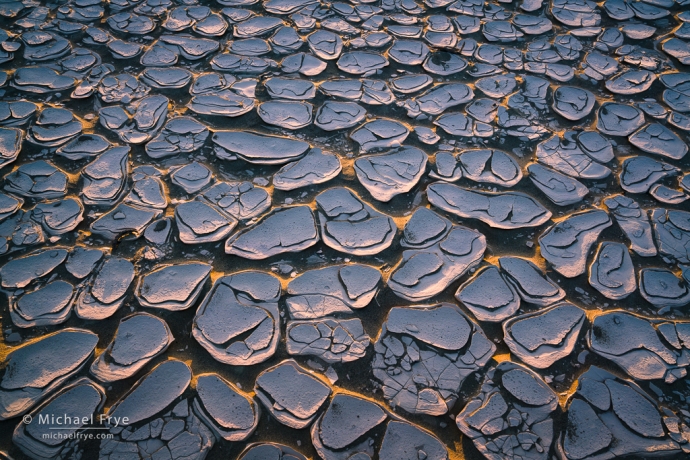
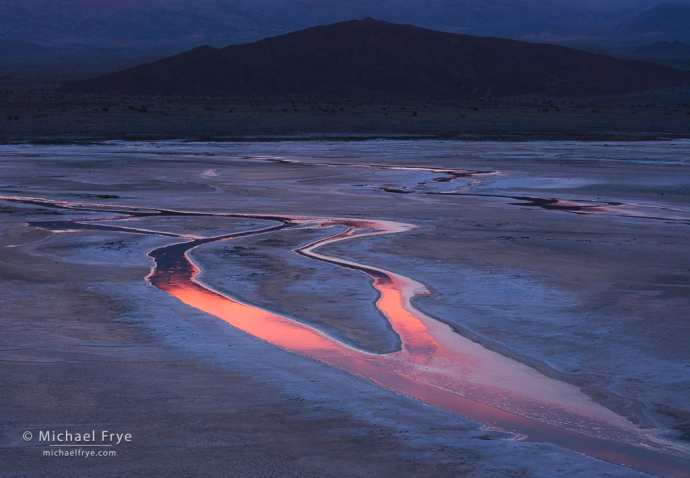
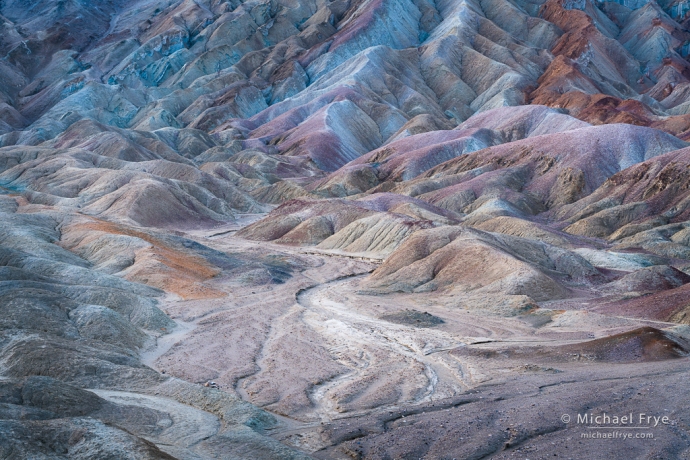
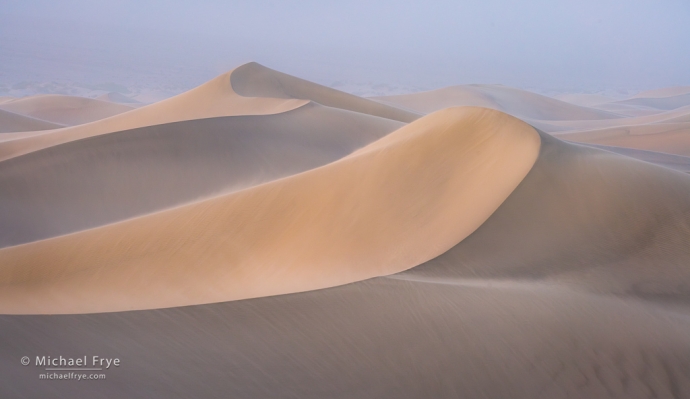
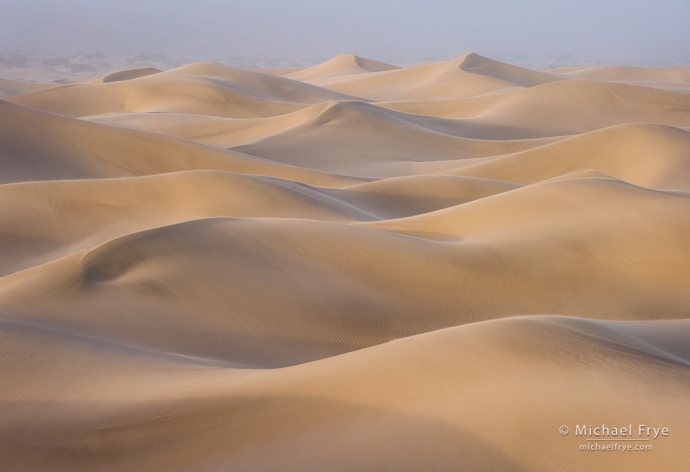
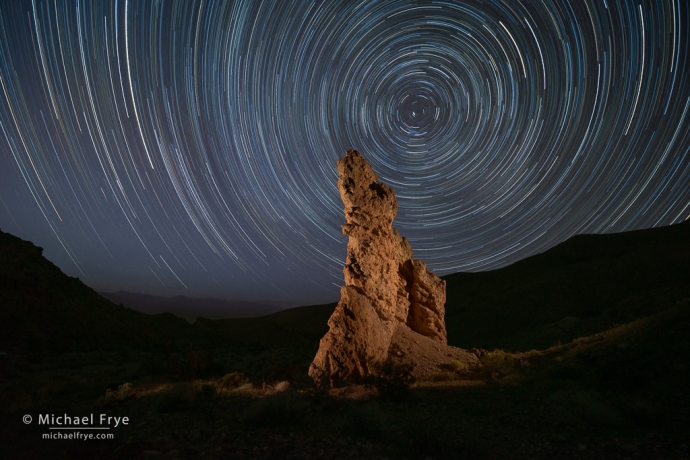
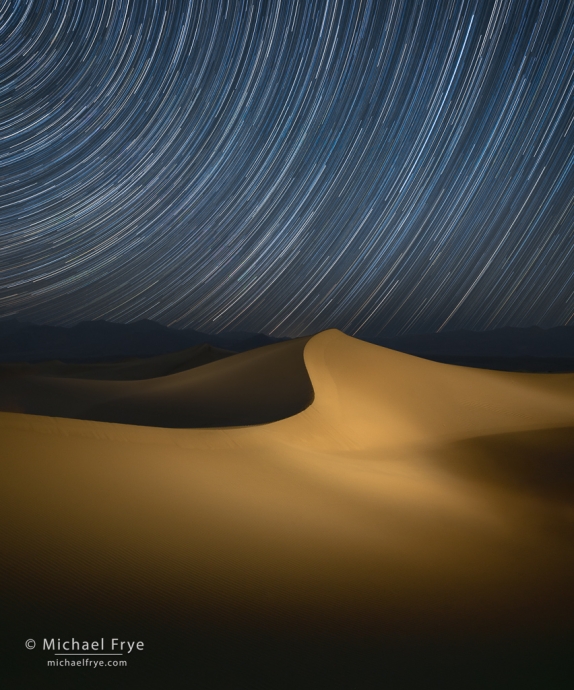








My goodness, Michael, these images are gorgeous! The mud tiles are surreal, and the Badlands image is beautiful with its subtle colors.
California (and Nevada) has had some wild weather patterns in the past year. Like you, I worry about what torrential rains could do to the southern deserts. Stay dry there in Mariposa!
Thanks very much Bob! We’ll see what happens. Whatever changes happen to the natural landscape will be interesting, but I just hope people stay safe.
Awesome Pictures…I’ve wondered why kind of damage this much rain would cause. We were there in Dec 2022 and want to go back. Weather was perfect and the scenery was nothing like i have ever seen,
Thanks Jeremy! Hope you get to go back soon.
Beautiful work. So, DV was hit last Aug 5th, 2022 by a 1 in a 1000 year rain storm and now, Aug 20, 2003 is another storm that may bring even more than the ~1.5 inches of last Aug. So now do they call this a 1/500 year storm? laugh. Aug seems to be a bad time to visit DV. At least the park knew this storm was coming.
So far here in Oceanside, TS Hilary has been only rain, but no significant flooding, as of 5:00 PM. Looks like the deserts are another story with lots of rain. Stay safe out there.
Thanks Edward. August can be interesting, with monsoon rains. Very hit or miss, and mostly miss, but sometimes DV can get hit. Hilary is even more unusual however. Glad to hear that you haven’t had any significant flooding so far. San Diego and the L.A. Basin get big rain events pretty regularly in winter, atmospheric rivers and such, and they have the drainage and road infrastructure to handle it, so I hope things won’t be too bad in those areas. It seems likely that the deserts will see more significant problems, as the water will run off even more quickly, and they don’t have the infrastructure to handle that much water.
Wow! Brilliant images. Your work never ceases to amaze me.
Thanks very much John!